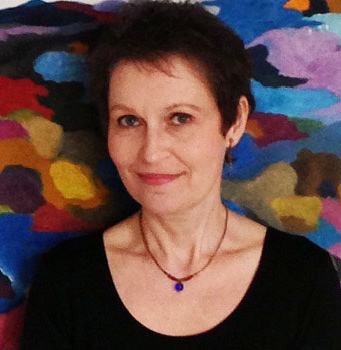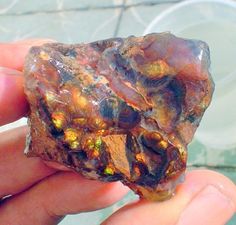“Guillaume went up to get his [“Black Insignia”] books from Helene’s room and came back all out of breath…Seeing Guillaume with his enormous sports bag, Daniel [the author of the books] started laughing, are they all in there, yes, all twenty-three [volumes], they’re all battered, I’ve read them so many times I know them by heart. Daniel opened the bag and took out a few books, how wonderful, the broken spines, the stains and scars, it’s what every writer dreams of.”
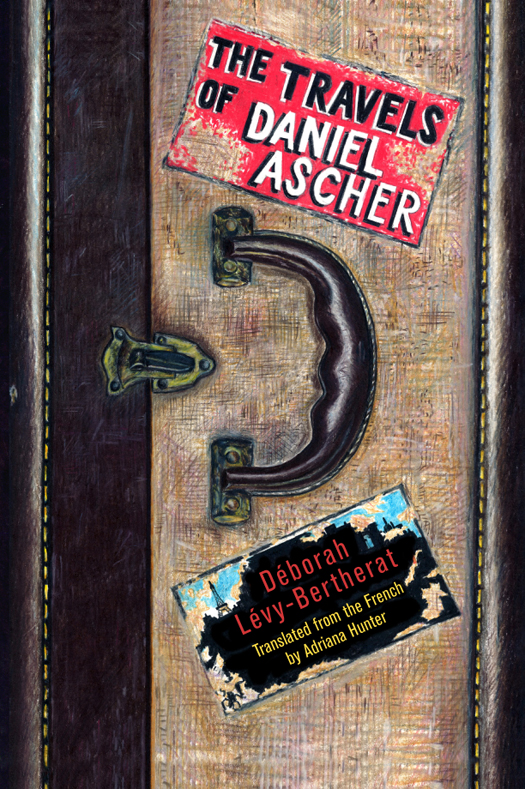 In this short but beautifully compressed novel about writing, identity, memory, and the Holocaust, French author Deborah Levy-Bertherat tells the story of Helene Roche and her great-uncle Daniel Roche, previously known as Daniel Ascher, and also known as H. R. Sanders, author of the Black Insignia series of young adult adventure novels. Divided into three parts which take place between September 1999, and July 2000, the novel focuses on Helene’s efforts to come to terms with her relationship with this much older family member, even as she herself is writing her thesis for a degree at the Institute of Art and Archaeology at the University of Paris. Helene has recently moved into a nearby garret apartment which her great-uncle has offered in a building he owns nearby while he is off on one of his many travels. Not especially close to her uncle, she lives with her boyfriend Guillaume, a fellow student who is a huge fan of Daniel’s Black Insignia series adventure novels which he read as a boy.
In this short but beautifully compressed novel about writing, identity, memory, and the Holocaust, French author Deborah Levy-Bertherat tells the story of Helene Roche and her great-uncle Daniel Roche, previously known as Daniel Ascher, and also known as H. R. Sanders, author of the Black Insignia series of young adult adventure novels. Divided into three parts which take place between September 1999, and July 2000, the novel focuses on Helene’s efforts to come to terms with her relationship with this much older family member, even as she herself is writing her thesis for a degree at the Institute of Art and Archaeology at the University of Paris. Helene has recently moved into a nearby garret apartment which her great-uncle has offered in a building he owns nearby while he is off on one of his many travels. Not especially close to her uncle, she lives with her boyfriend Guillaume, a fellow student who is a huge fan of Daniel’s Black Insignia series adventure novels which he read as a boy.
Gradually, Daniel’s story unfolds, as Helene learns that Daniel, a Jewish child living at the time of World War II, was adopted by her family when his own family disappeared. She knows that he has some family members in the US, but she is not involved or interested enough in his life to want to pursue this aspect of his life. Though this is actually part of her own family’s history, she does not regard it as any of her business. Her closest connection to Daniel has been that, historically, when he has returned from his many trips, he has brought her a gemstone from one of the countries that he has visited. Guillaume, however, is completely committed to knowing and befriending Daniel on the basis of his novels, all of which he wants to have autographed by the author.
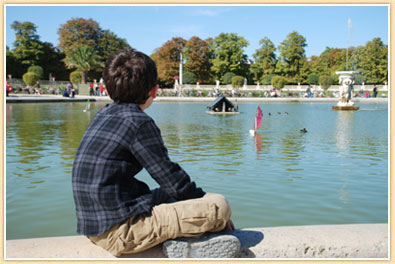
The Luxembourg Gardens in Paris, a continuing motif throughout this novel, is where Helene took her young neighbor Jonas for after school visits.
Delightful drawings by Andreas Gurewich accompany the novel, which develops the story of the past as Helene visits the old neighborhood in which Daniel Ascher grew up. Helene knows that Daniel’s family consisted of photographers, and she is curious to meet any of the older residents of the neighborhood who might have known people associated with the old Ascher Studio, now destroyed. Postcards from faraway places like Patagonia, sent by Daniel to Helene and others, make Helene feel somewhat more curious about her great-uncle Daniel’s experiences. Though she herself has never managed to read more than a few pages of any of his books, she learns from Guillaume that the adventures of Peter Ashley-Mill, the hero of the Black Insignia books, provide hints about real life adventures that Daniel Ascher may have experienced and survived in Machu Pichu, the jungles of Borneo, and the ruins of Pompeii, among other places.
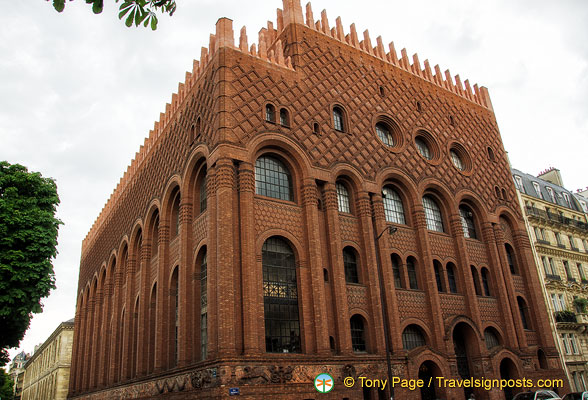
The Institute of Art and Archeology, at the University of Paris, where Helene was studying for an advanced degree: Photo by Tony Page/Travelsignposts.com
Gradually, Daniel’s complex feelings about his adoption, his adoptive family, and the survivors of his birth family in the United States, are revealed, and Helene’s feeling that he seems to have changed since his last trip make their relationship even more complex. Old photographs and their history, a modern day hurricane and its aftereffects, and a trip to New York all animate the changes taking place in the relationship between Daniel and Helene. Suggestions arise regarding secret relationships among family members, which threaten to affect future relationships. Within six months, questions arise regarding the veracity of Daniel’s own statements about his life and his feelings about his writing life.
The novel’s action is not complex, though it deals with three generations of people, some of them from other countries, and many of whom have good reason to hide the past. The novel sometimes jumps around out of chronological context, though the author is careful to keep her audience in mind as she tells the story. At about the halfway mark, I found myself thinking that this might be a good book for use in teaching young high school students about the various literary tools and techniques, well developed here, which are available to writers who might want to provide a new approach to a memoir, a story, or a major subject like the Holocaust (though that is not its primary focus). As Helene learns more about Daniel and about herself, she matures and comes to some conclusions of her own, and as the novel ends, the reader cannot help but hope that the family will be able to deal with the revelations which are emerging.
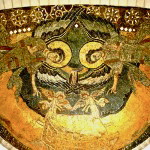
Helene is doing a thesis on the Mosaic at Germigny-des-Pres, at the top of the semicircular vault in this early Romanesque church. Note the two horizontal angels in the center, mentioned in the novel.
Author Levy-Bertherat has a light touch for much of the novel, despite the seriousness of the themes and discoveries about the past, and she succeeds in stimulating empathy for her damaged characters, especially Daniel and Helene, his much younger family member. Ultimately she shows that the true writer and committed chronicler of the past, wrapped in the atmosphere of another time, has no alternative but to follow his/her muse into the scenes and stories which have animated his/her own life, and as Levy-Bertherat shows here, relive and perhaps revise his/her own history in the process. A novel which is simple in its plot and complex in execution, The Travels of Daniel Ascher raises awareness in the reader about the effects of the past on the present – and our inability to escape the past, even should we wish to do so.
Photos, in order: The author’s photo appears on http://cultures-j.com/
The Luxembourg Gardens, where Helene took little Jonas after school, are shown on http://ciaobambino.com/
The Institute of Art and Archaeology at the University of Paris is where Helene was studying for her advanced degree. Photo by Tony Page on http://www.travelsignposts.com
The valuable fire agate, which Daniel brought home to Helene after his trip to Patagonia is shown on https://es.pinterest.com/explore/
The mosaic of angels at Germigny-des-Pres, at the top of the semicircular vault of this Romanesque church, is the subject of a thesis by Helene and appears on http://orfeee45.over-blog.com/
ARC: Other Press
